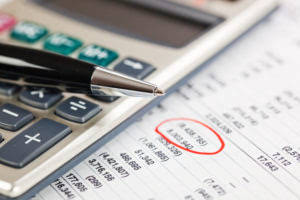Blog
Direct Write-Off and Allowance Methods Financial Accounting

A bad debt of $100 might not look like a big deal for some businesses, and can be easily written off. But if your bad debt amounts to a few thousands, not having accurate reporting and contingency tools can be problematic. You finish the website and send your final invoice to your client, but after months of chasing after them, you decide that it is unlikely you’ll ever get paid, so you want to write it off as bad debt. Therefore, for smaller businesses that deal with simple product sales, the direct write-off method could be the best fit for you.
If you’re wondering which method is best for your small business, speak with a professional for insights into your specific situation. In exchange for $ 5,000, an accounting firm compiles a company’s financial accounts in accordance with applicable legislation and delivers them over to the company’s directors. The firm is following up with the Company’s directors on a regular basis, but they are not responding. The company then debits $ 5,000 from Bad Debts Expenses and credits $ 5,000 from Accounts Receivables.
What is the Direct Write-off Method and When is it a Good Idea to Use It (3 Cases)
An accounts receivable account is written off from the financial statements only when considered uncollectible. Financial institutions use write-off accounts when they have exhausted all methods of collection action. Write-offs may be tracked closely with an institution’s loan loss reserves, which is another type of non-cash account that manages expectations for losses on unpaid debts. Loan loss reserves work as a projection for unpaid debts, while write-offs are a final action.
Using the direct write-off technique, a debit of $600 will be recorded to the bad debt expense account, and a credit of $600 will be made to accounts receivable. The real amount of the bad debt is deducted from the bad debt expense account. This has the direct write-off method is used when a direct influence on sales as well as the company’s outstanding balance. It results in inaccuracies in revenue and outstanding dues for both the initial invoice accounting period and the accounting period after it is designated as a bad debt.
Journal Entry for the Direct Write-off Method
The allowance method is the more widely used method because it satisfies the matching principle. The allowance method estimates bad debt during a period, based on certain computational approaches. When the estimation is recorded at the end of a period, the following entry occurs. For https://www.bookstime.com/articles/what-is-a-pay-stub businesses, the direct write-off is a simpler way to handle bad debt, and it must be used when dealing with unpaid accounts in federal taxes. If Ariel gets payment from the customer later, she can credit bad debt and debit accounts receivable to reverse the write-off journal entry.
Usually many months will pass between the time of the sale on credit and the time that the seller knows with certainty that a customer is not going to pay. It is difficult to adhere to the matching principle and the concept of conservatism when a significant amount of time elapses between the time of the sales revenues and the time that the bad debts expense is reported. This is why, for purposes of financial reporting (not tax reporting), companies should use the allowance method rather than the direct write-off method. Because customers do not always keep their promises to pay, companies must provide for these uncollectible accounts in their records.
Accounts Receivable and Bad Debts Expense Outline
When the factor purchases the receivables without recourse, the company selling the receivables is not responsible for unpaid amounts. Then all of the category estimates are added together to get one total estimated uncollectible balance for the period. The entry for bad debt would be as follows, if there was no carryover balance from the prior period. To illustrate, let’s continue to use Billie’s Watercraft Warehouse (BWW) as the example.


